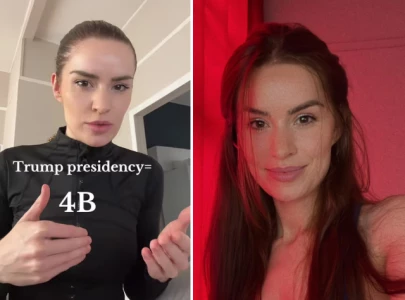
Do you get the feeling that something weird is going on with the two major opposition parties? That whenever they plan to challenge the government, a switch flips and they are found rubber-stamping every treasury bill that comes their way? That they cannot get together to give the government a tough time? That because of this peculiarity, an objective and impartial parliamentary accountability process is dead and a government with a razor-thin majority in the national assembly gets a free reign?
There are two narratives. The ruling party claims that these opposition parties are seeking an NRO (National Reconciliation Ordinance — a defunct law passed by Gen Musharraf’s government meant to provide relief from prosecution to the PPP, the MQM, bureaucrats and businessmen — which since its demise has become a pejorative) and therefore do not want to burn all bridges.
Then there is the narrative of these parties that posits that the military establishment wanted the incumbents to come to power and has therefore used the meta-narrative of accountability to damage their public image and compromised the elections. But then surprisingly these two parties could not even join forces to protest the election results as another switch flipped and they decided to maintain their distance.
What if you were told that it all comes down to the politics of two exceedingly insecure, selfish and vindictive men? That their pursuit of parochial self-interest has compromised the integrity of the dynastic gigantic parties? Before I mention them by name and you stop reading thinking that it might be yet another hatchet job against them let me assure you that this is not the recycled version of old allegations. They are based on my personal observations. The two men in question are Mian Shahbaz Sharif and Asif Ali Zardari. Let us talk about Shahbaz Sharif this week. Next week we will talk about Zardari.
In 1997, before Nawaz Sharif assumed the office rumours reached us that Shahbaz Sharif had gone to Abbaji (their father Mian Sharif) and said that Nawaz had already been chief minister twice and prime minister once and that he (Shahbaz) deserved to be premier next. We also heard that Mian Sharif had vetoed it and consequently Nawaz Sharif became premier again. As a compromise Shahbaz was installed as Punjab’s chief minister and Pervaiz Elahi, the man promised the job, was asked to function as the speaker of the provincial assembly. I mention this because it underscores a desperate desire to be the country’s chief executive at the expense of own brother. We know a military coup and exile came next. When the exile ended and the PML-N swept Punjab, word had it that Gen Musharraf was not ready to let Shahbaz Sharif become CM again. An interim CM was selected and the younger Sharif worked his friends and family network to change Musharraf’s mind. Consequently, he became the CM. Meanwhile, Chaudhry Nisar became the leader of the opposition at the Centre.
When the party won in 2013, these two men had a secret ambition to become PM. But those ambitions were spoiled when Nawaz Sharif came out of retirement and became premier. Thus, grew an alliance between the two men which would prove fateful.
If you recall the sequence of events, when a year after the elections, the PTI decided to agitate, the then PM sought the help of powerful interlocutors to defuse the tension. As an operation against terrorists was already on the cards and Zarb-e-Azb was soon launched, a message went out to the protesting parties that the country was in a state of war and they should desist from agitation. This would at least have delayed the twin marches for several months had the police under Shahbaz Sharif’s control not moved to remove barriers around Tahir-ul-Qadri’s residence. It was a strange show. TV tickers started flashing at midnight that the police had reached the venue. But the crackdown would not begin until noon next day when enough media men had gathered to air the whole sad incident and Gulu Butt’s vandalism live. People were killed. Since Shahbaz Sharif claimed he had nothing to do with it, you could assume he lost control. But you cannot deny however that the Model Town tragedy paved the way for the PTI-Minhaj twin sit-ins. And the pattern would repeat itself when Tehreek-e-Labbaik Pakistan went for the Faizabad sit-in. Incidentally, Faizabad is right next to Rawalpindi, the last city that comes under the jurisdiction of the Punjab government (then headed by Shahbaz) before the Federal Capital begins. By a curious coincidence, Shahbaz (and not Maryam) was the star performer of the Dawn Leaks. Then we also witnessed the moment when the ex-premier returned home leaving his ailing wife in London and his brother could not reach the airport despite much fanfare.
Is it possible that the former chief minister of Punjab was actively trying to undermine his brother when he was premier? The circumstantial evidence would point to an answer in affirmative. Meanwhile, Shahbaz’s attempts to project himself as a close confidante of the establishment was paving the way for a radical anti-establishment narrative within the party. This and the hyper-activism of an English columnist who was rather close to Zardari than the PML-N led to the radicalisation of the Maryam-led faction of the party and resulted in the shape of Dawn Leaks. From Model Town to sudden disappearance from the scene during the by-election in the then NA-120, Shahbaz doesn’t seem to have left any stone unturned to make it clear that his ambition and not his elder brother’s wellbeing was closer to his heart.
In the 2018 elections, it was payback time. Maryam’s narrative of victimhood, which began the day her picture appeared in the first story about Panama papers, had gained considerable traction by then. Shahbaz did not find support from her faction of the party. This reduced his chances considerably. Then his close friend Chaudhry Nisar also did not help his prospects because he decided to contest elections as an independent candidate and convinced many other party members to defect and contest elections on his chosen election symbol of a jeep. He did not achieve the intended success and ended up compromising Shahbaz’s chances too. A divided house was the primary reason why the PML-N lost in 2018 and Shahbaz’s ambition had a lot to do with it.
Today it is Maryam’s party. Ironically, she is neither in the parliament nor legally qualified to contest the election. Her insistence on blaming the country’s establishment for her ordeals obscures the role her Chacha played in bringing down her father and interestingly strengthens his hand. It is a smart strategy meant to draw attention away from the shortcomings and divisions at home and so far it has worked. But this is about the extent of it. In the past, I have stated that the PML-N’s prospects are dim until this war of succession is over. Let me say it is and Maryam has won. Shahbaz hangs on as a spoiler. But the chances of a revival are still slim until Shahbaz steps aside and Maryam shows she has the wherewithal of transitioning from a tactician to a stateswoman which starts with cleverly moderating her tone.
Published in The Express Tribune, August 29th, 2020.
Like Opinion & Editorial on Facebook, follow @ETOpEd on Twitter to receive all updates on all our daily pieces.












COMMENTS
Comments are moderated and generally will be posted if they are on-topic and not abusive.
For more information, please see our Comments FAQ